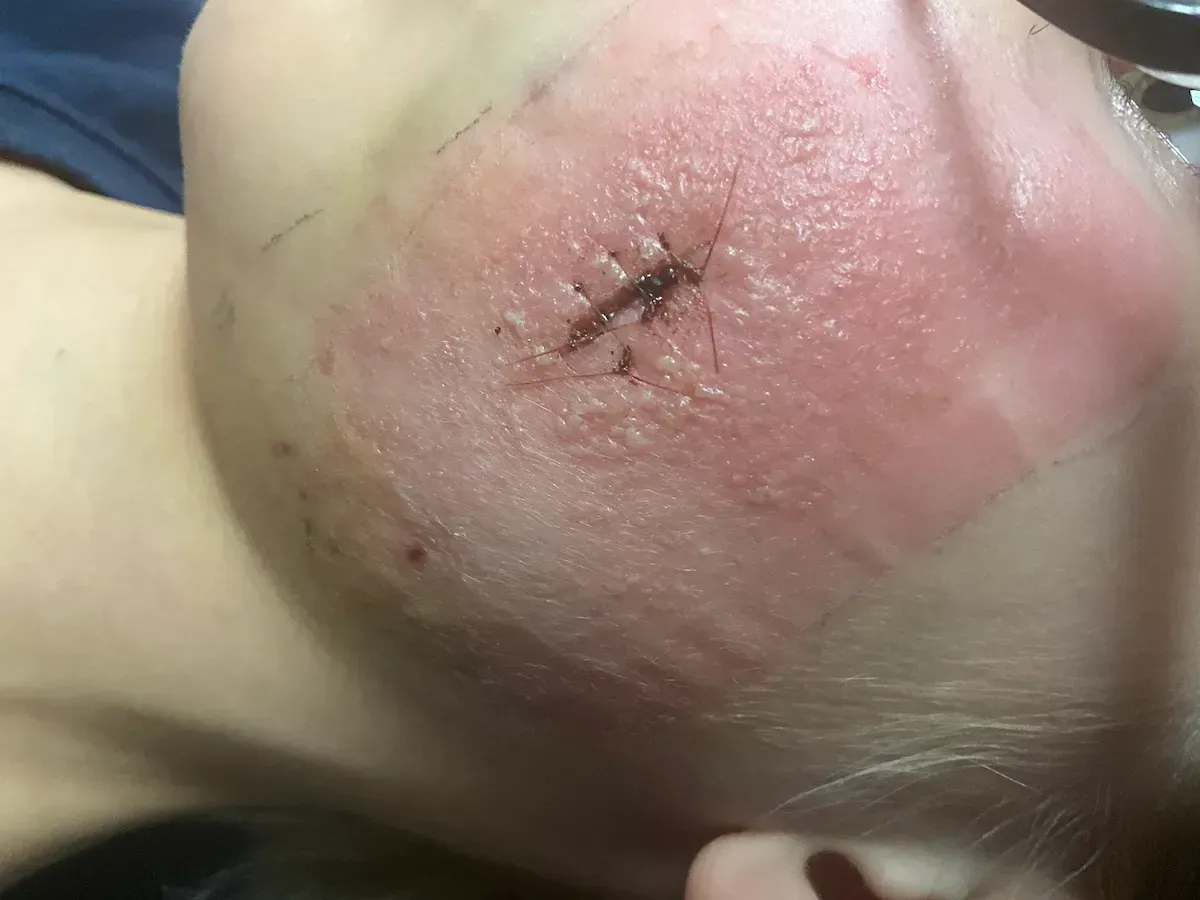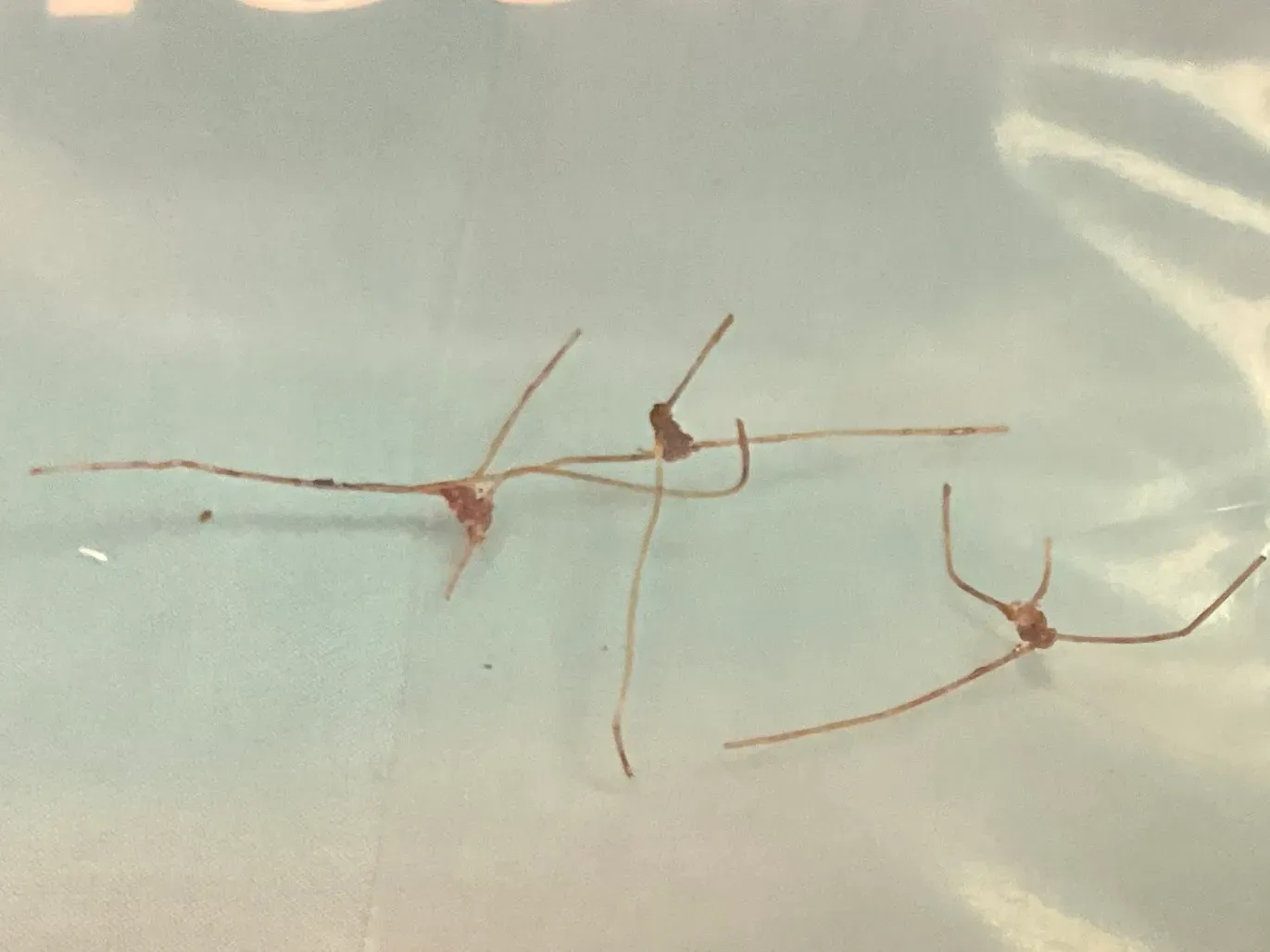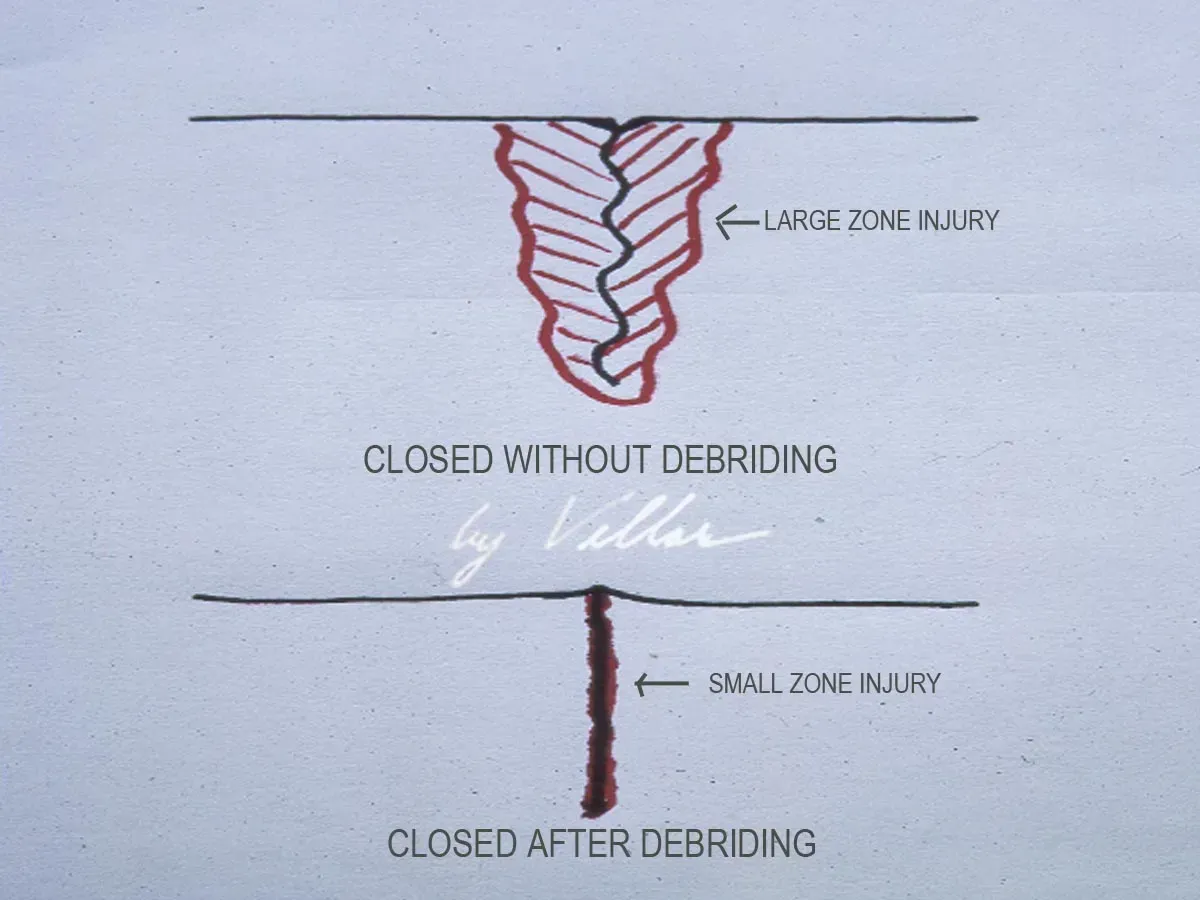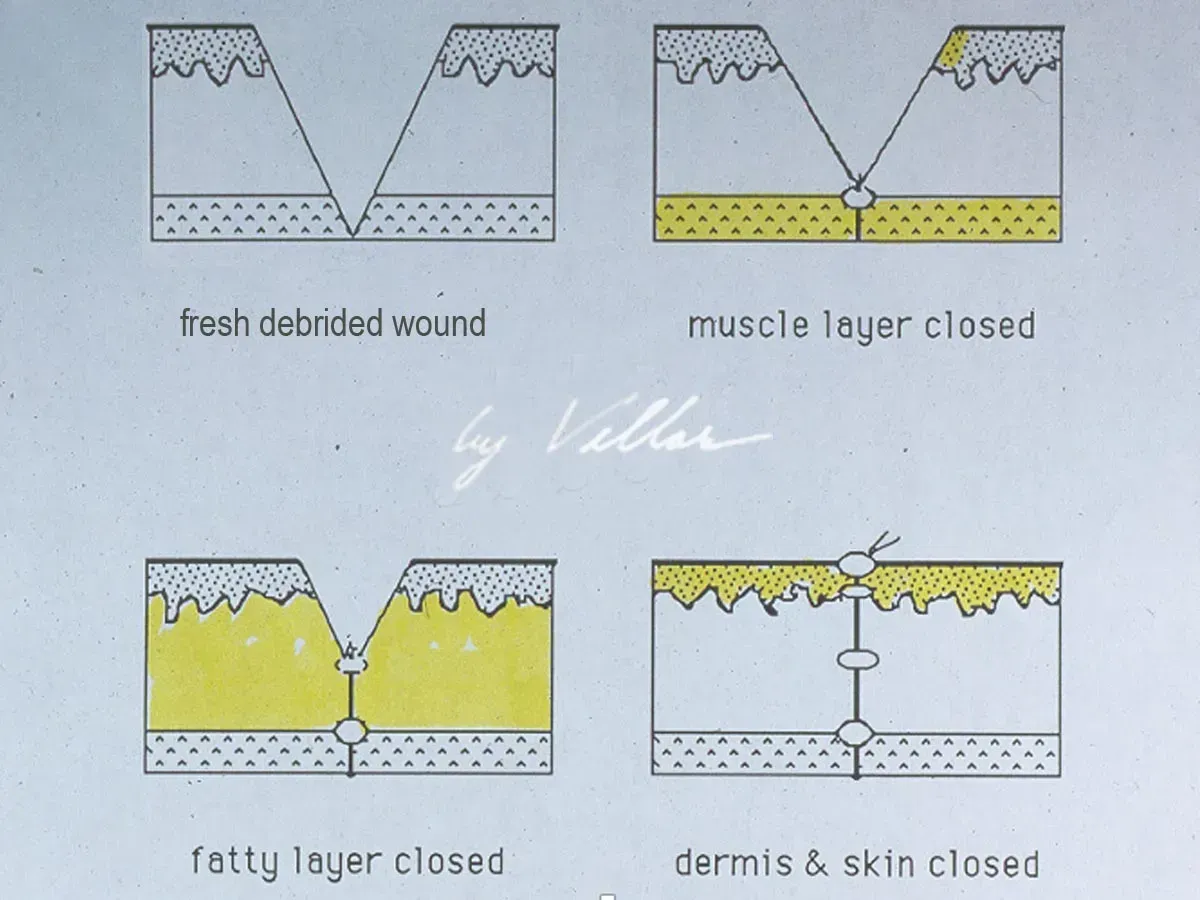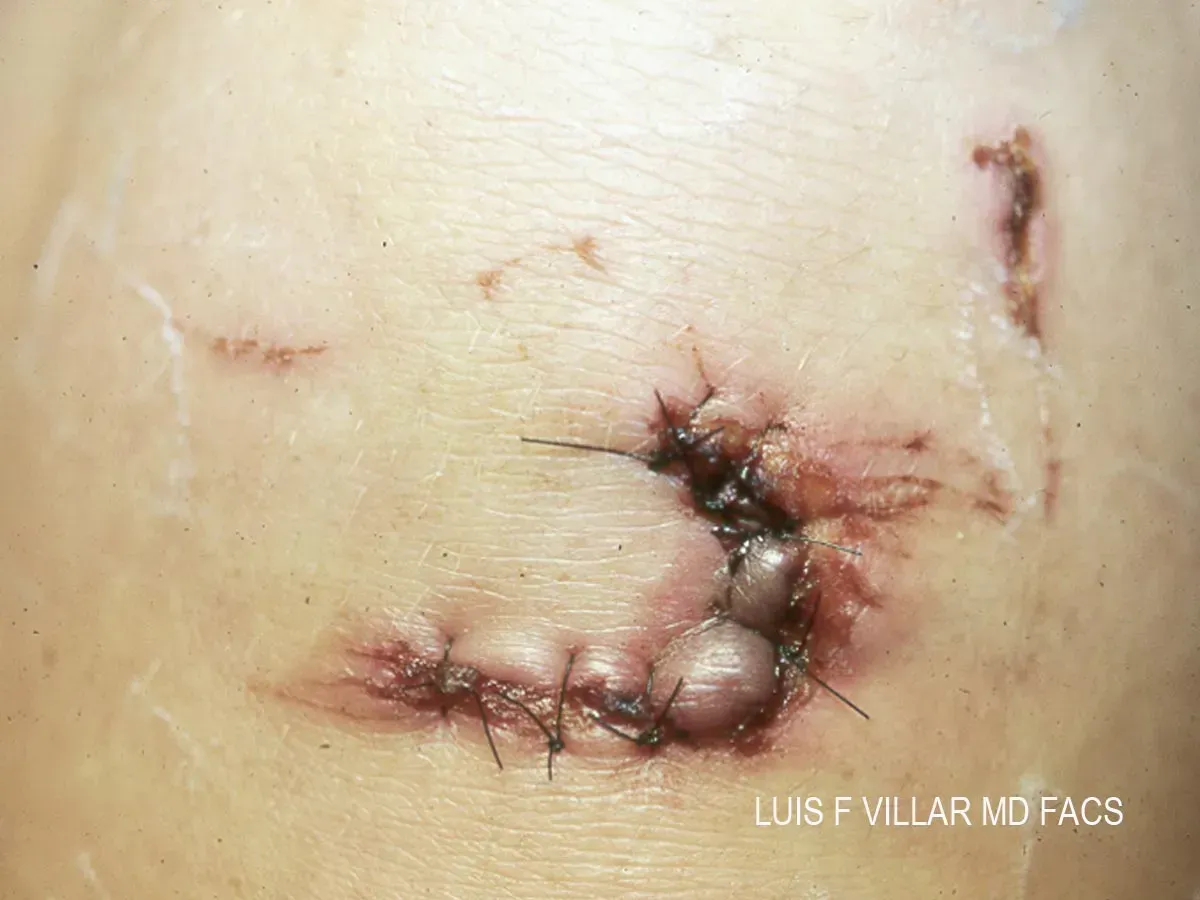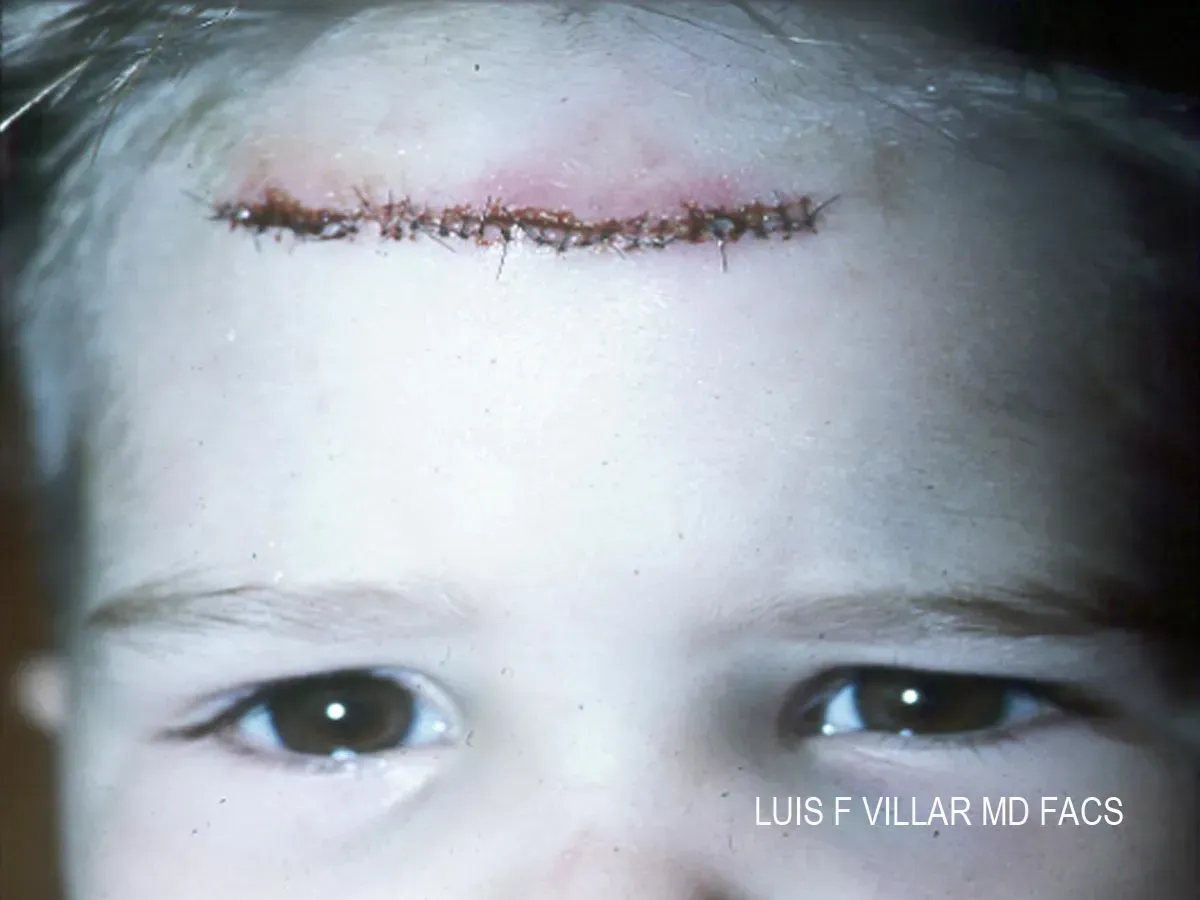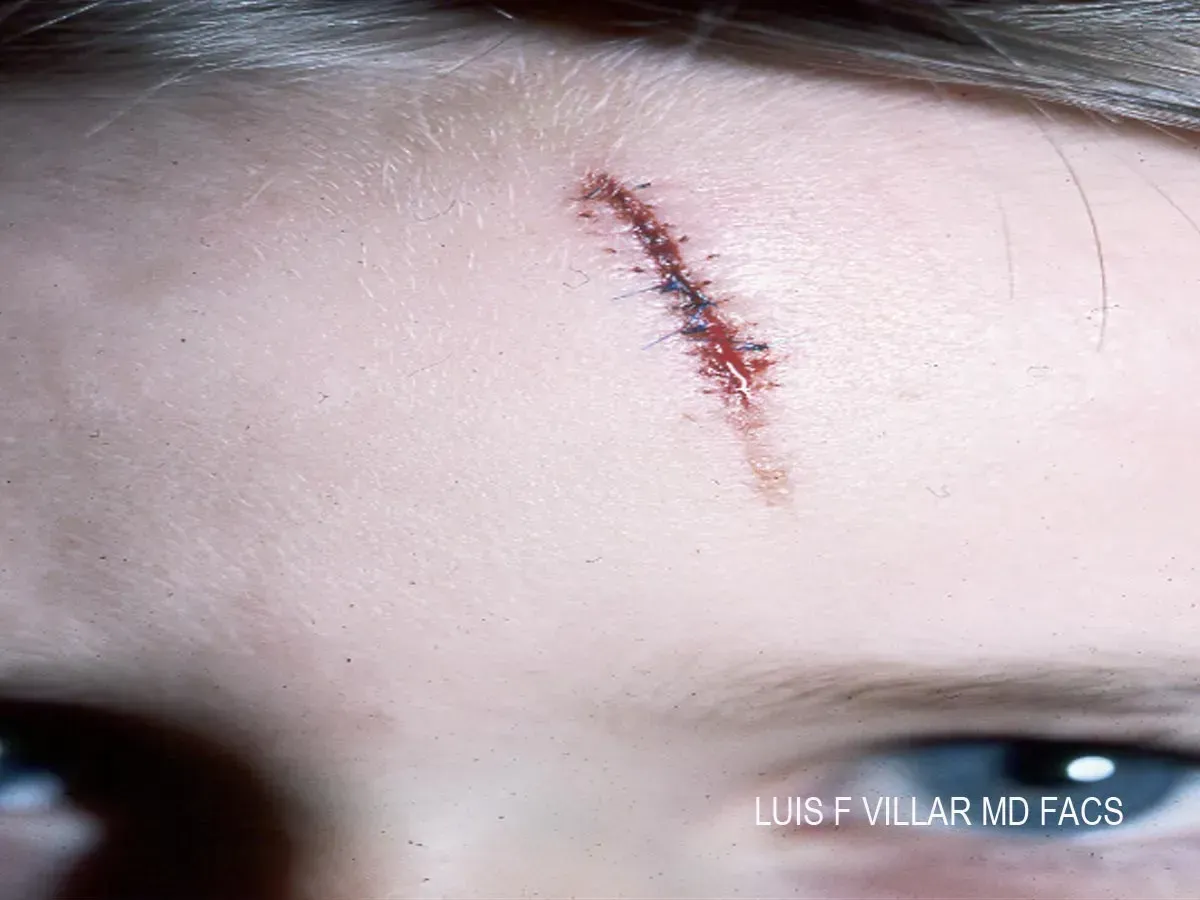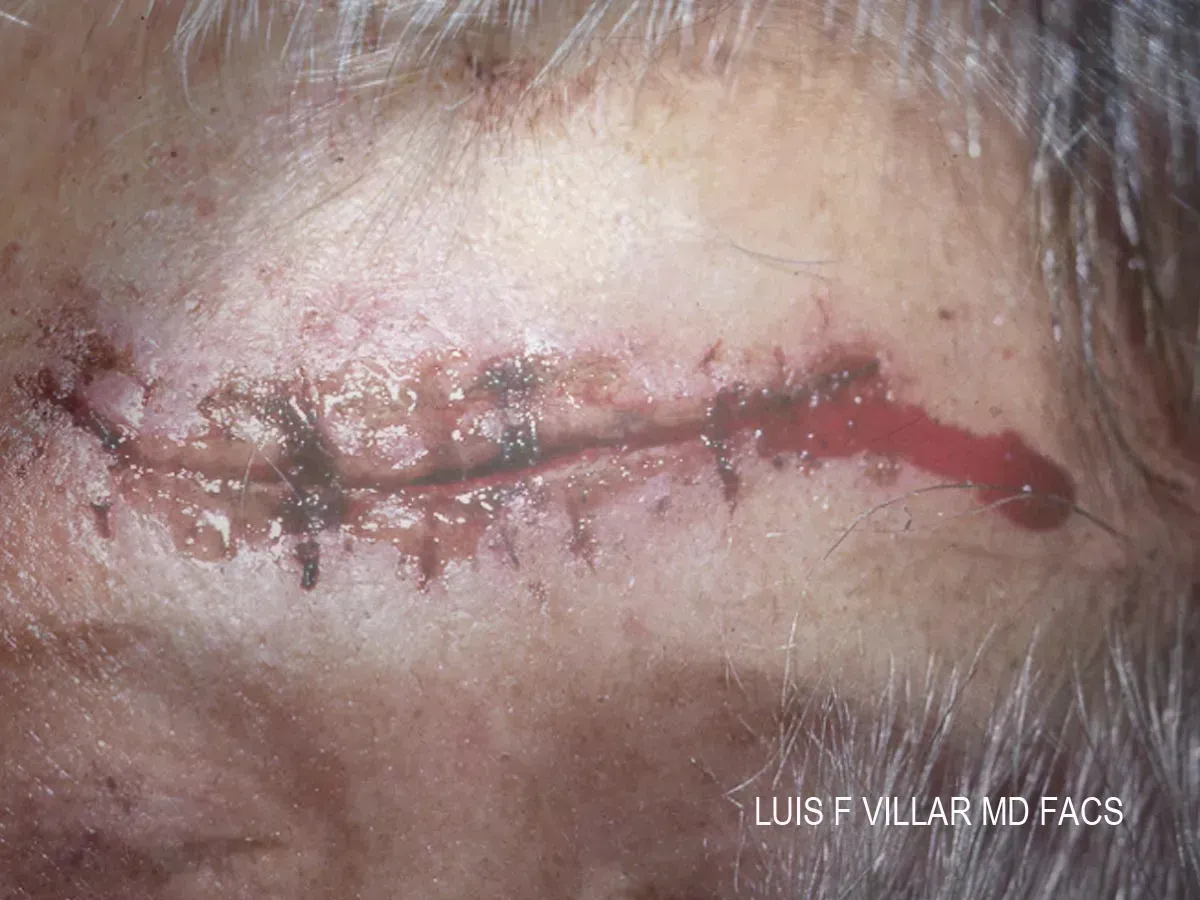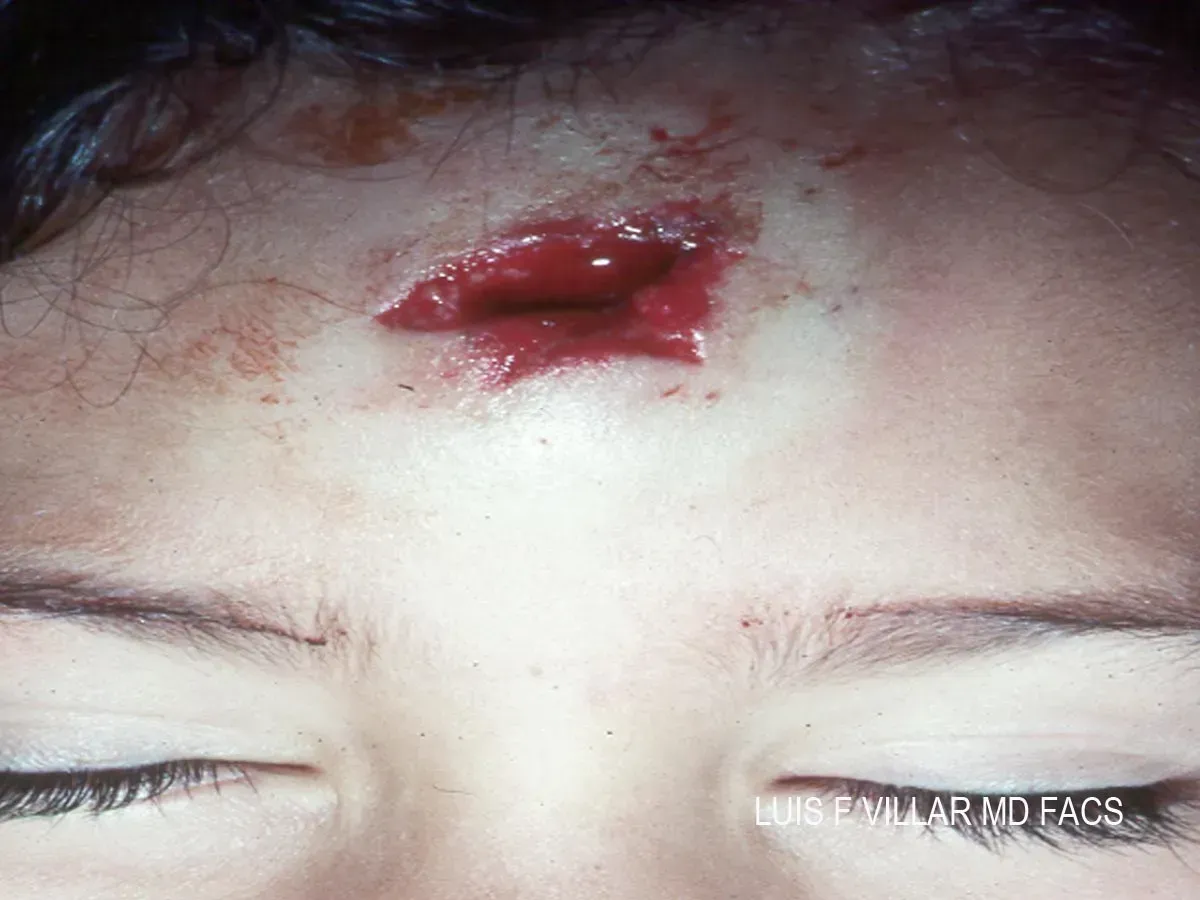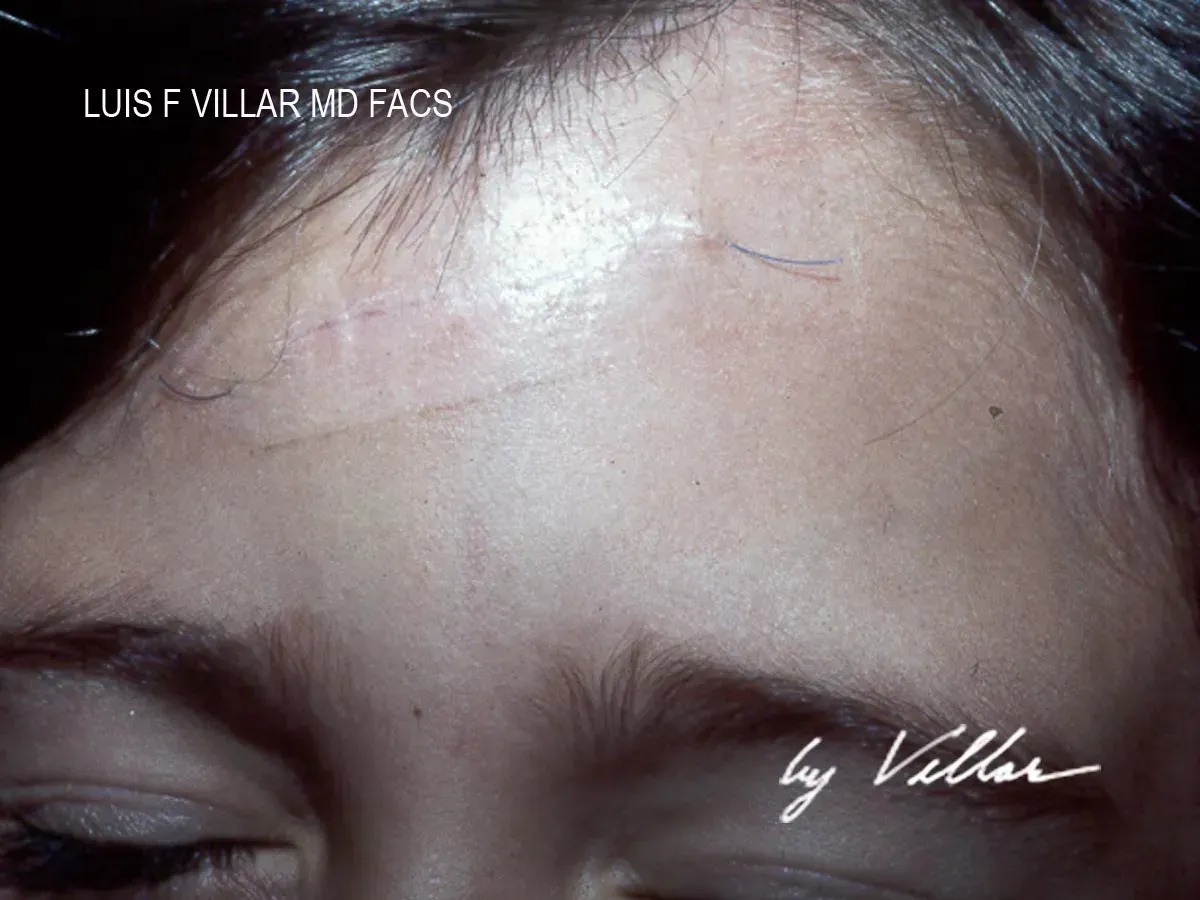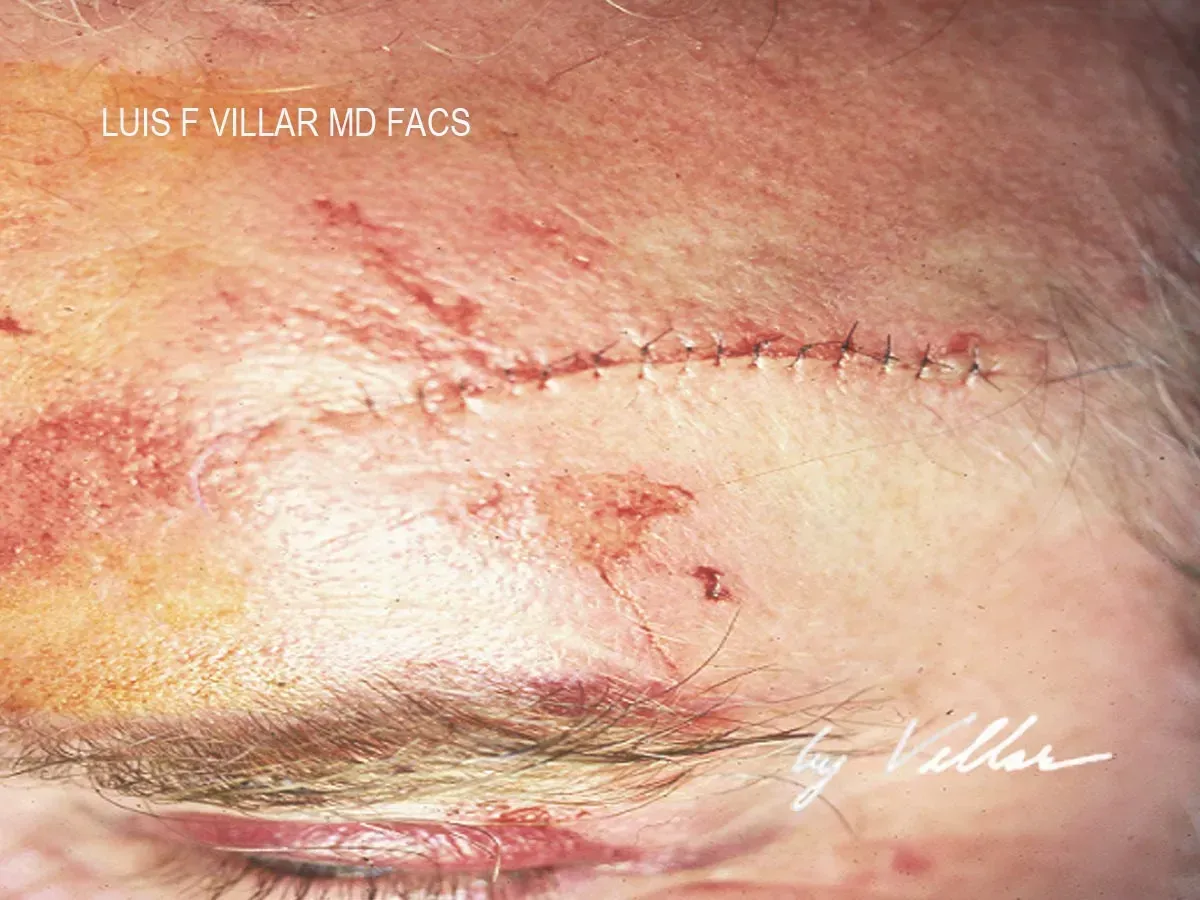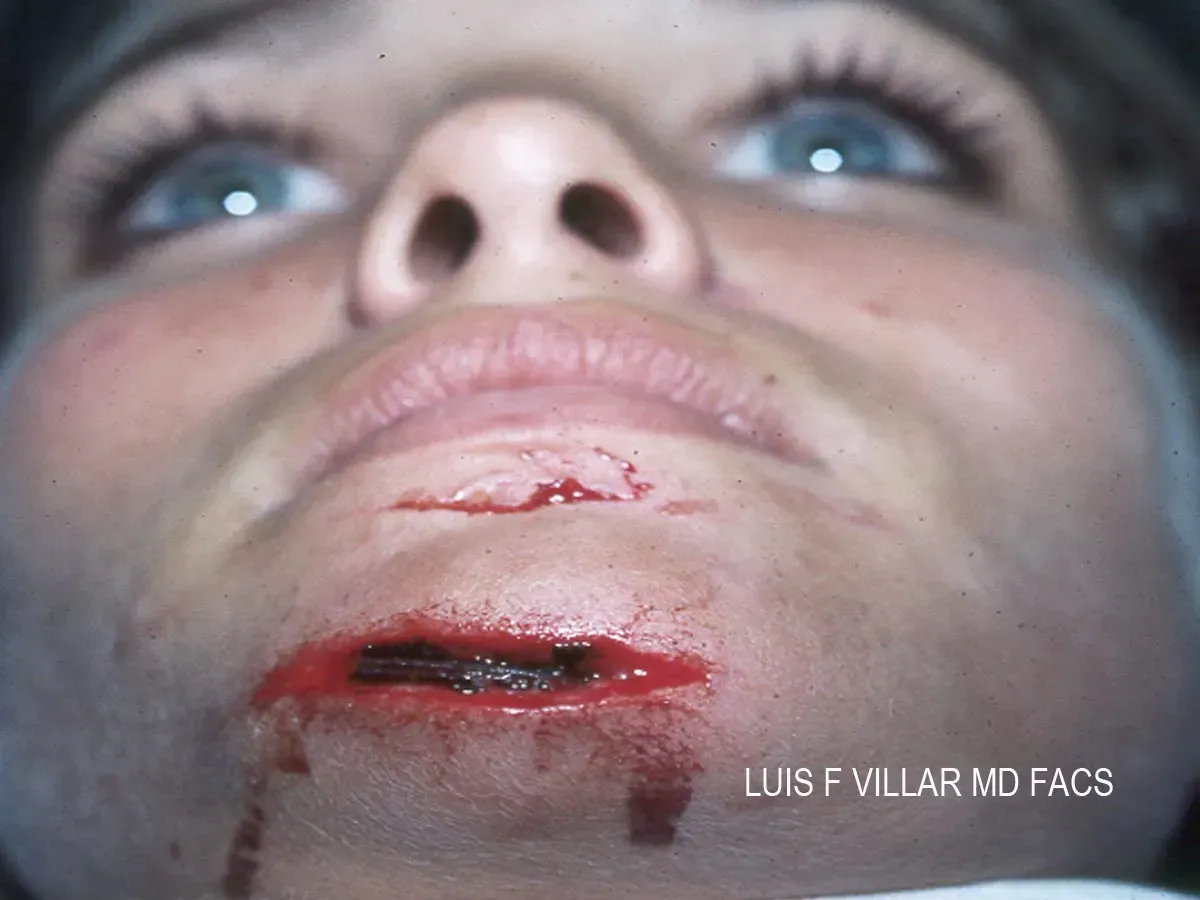BAD SUTURING/ BAD SCARS

BAD EMERGENCY ROOM CARE IS THE NORM
Bad Emergency Room care is the norm in this managed care world, but not with our trauma surgeon. This child is a perfect example of everything that is wrong with the system.
The child was hit in the face with a golf club by another boy. This resulted in a burst injury, not a laceration. That means the tissue broke open by a concentration of impact energy that explodes the tissue apart. Thus the margins of the wound are damaged. If this is simply sutured together, the body will have to remove the dead cells and replace them with scar tissue. There will be prolonged swelling which will isolate the area from the immune system and result in a higher infection rate. Wound healing 101.
HB (House Bill) 221, another well intentioned bill passed 7/1/2016, has resulted in a constant flow of patients deprived of state of the art quality care. It made it a criminal offense to bill a patient for services delivered in the Emergency Room punishable by loss of license, $10,000 fine, and/ or criminal charges. The result? Try to get a Plastic Surgeon in the E.R.
The good news? If you get to me or your personal trauma surgeon, the next day, we can usually reverse the damage before it is too late by excising the wound, bad sutures and all, and using state of the art techniques.
Best practice requires removal of the injury zone to normal tissue, reorientation to favorable direction, delicate tissue handling, and layered closure. Absorbable sutures deep and monofilament nylon or polypropylene externally.
